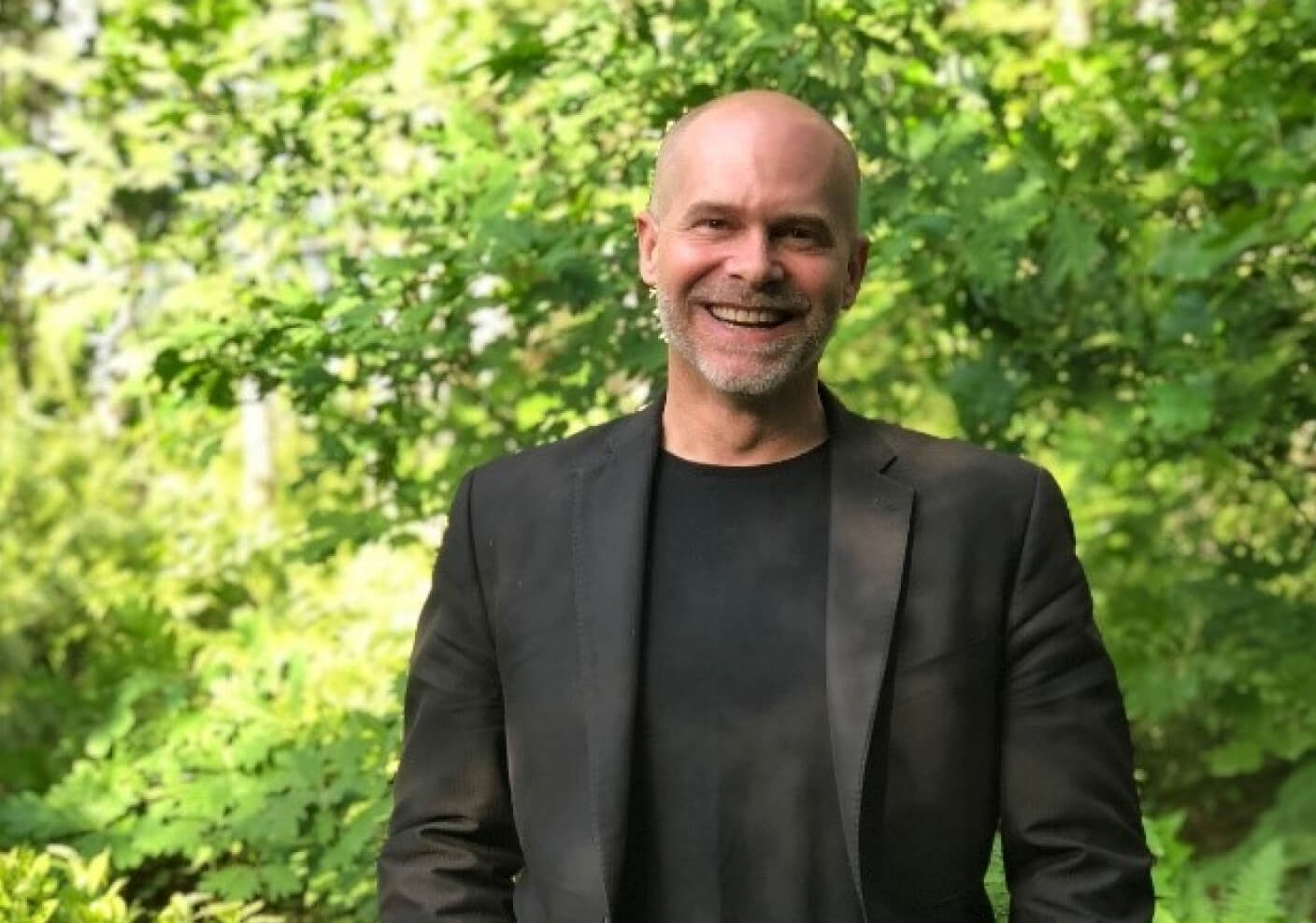Mursion recently continued our Future of Healthcare Roundtable Series by hosting Bryan Kohl and Dr. Lisa Desai of MindWise Innovations to discuss the challenges and opportunities presented by having mental health conversations at work.
Kohl is a 20-year technology professional who has spent his career working with startups and large organizations including Bose and Dell. As the Senior Vice President of MindWise, he leads the strategic business and organizational development efforts focused primarily on making certain that MindWise reaches as many people as possible, whether that’s student bodies, workforces, and communities across the world.
Dr. Desai is the director of Behavioral Health at MindWise with 20 years of clinical and administrative experience across delivery systems and college counseling centers, community mental health hospitals, and private practice.
In her role at MindWise, Dr. Desai leads the development and implementation of behavioral health programs for workplaces and communities with the goal of really reaching at-risk and underserved communities and populations. She also oversees the MindWise Behavioral Health Screening Platform, and regularly consults with partners across various sectors.
Below is an excerpt of Bryan and Lisa’s conversation.
Bryan: We always start these conversations by saying thank you. Usually we wait for the end of our presentation to say thank you, but we start by saying thank you because we recognize that these conversations aren’t easy, that these conversations are often difficult to have, whether it’s around mental health, whether it’s around substance misuse. A genuine, sincere thank you for joining us, again, this morning or this afternoon. I think many of the questions we keep asking ourselves is why now? Why are we having these conversations now? Might we be approaching a turning point within organizations, within communities, within schools on having these conversations?
Lisa, you and I, we talk about this often, but growing up, I can remember hearing my father say things like, “Check your baggage at the door,” and forgive the expression, but just putting it out there I remember that expression, I grew up with that expression. It was the personal life, the professional life, check your baggage at the door, show up, get the work done. I’m wondering if that is a incredibly dated expression.
I think what we’re realizing and particularly over the last, say, eight, nine months, is that that is extraordinarily dated that it’s virtually impossible to, “Check your baggage at the door.” I think maybe we are at a turning point of sort. Speaking of turning points, we often talk about Maslow’s hierarchy of needs. It takes you back to seventh grade, Lisa, when we were first introduced to Maslow’s hierarchy of needs.
Lisa: Yes, this goes back to high school psychology. It’s thinking about what are more basic needs, what are the needs that we take for granted, and what are other more higher-level, upper-level needs, like our self-esteem, how we’re doing at work, our work goals and for many of us, we were lucky enough to really focus on those upper-level personal-professional goals and COVID comes along really, that hierarchy is affected and turned sideways for everyone.
I think part of what really has been phenomenal, first of all, we’re seeing with behavioral health during COVID is that people can relate now. When we talk about mental health, when we talk about stress and anxiety, and how is it impacting you, we can all relate to that. It’s not that we couldn’t before COVID, but the permission to talk about it now feels different.
It’s interesting, I think just asking, we hear from corporations that how do I address COVID in remote work? How do I address COVID in my employee base when they’re feeling worried about themselves, their family members? We hear about it very much in those terms from organizations and communities. I think in terms of the population level, the question is being asked, How is your health? Which wasn’t being asked before.
Bryan: Yes, something else, Lisa, that you and I talk about often is, I can remember growing up and hearing my grandmother whisper the word cancer. She wouldn’t say cancer, she would whisper the word cancer. Much like we experience with cancer today, I feel like the conversation’s changing. We’re more courageous. There are organizations that have demonstrated courage to start having these conversations, or the permission to have these conversations have been granted.
There are organizations that have demonstrated courage to start having these conversations, or the permission to have these conversations have been granted.
Lisa: The Kaiser Family Foundation has been tracking the impact of COVID since March. As of July, 53 percent of adults were saying that the stress around COVID has a negative impact on their mental health. So that’s something we’d really have to pay attention to.
Safety, Predictability, Control
Bryan: An expression that we use often internally is while a lot of this the last 8, 9, 10 months have made many of us feel vulnerable, what’s important is that it doesn’t mean we’re powerless, it doesn’t mean that we can’t better understand, can’t take control, can’t better manage what is happening around us. To do that, we use a framework and it’s a framework that we were really excited to share with all of you called Safety, Predictability, and Control.
Lisa: Yes, so it’s a very straightforward framework that focuses on in these times of uncertainty. We’re all facing this, we’re hearing a lot about it. What can we do to manage on a day-to-day basis? Given the work that we do, we think about it in terms of individually, how do each of us manage and as an organization. Safety, Predictability, Control is very much about if you think about that hierarchy, we used to feel safe. Physical safety now does not feel like an assumed thing. We take great care to wear masks, to social distance, but how do we bring emotional safety?
How do we bring that to our lives? We were saying before we got started today that this theme of safety is really going to be woven into the conversation today in a variety of ways. We talk about safety from a self-care emotional perspective, organizational perspective. It’s how do I gravitate toward relationships, how do I seek out and strengthen relationships in my life, conversations in my life that feel positive, and recognize those that may feel negative that don’t have a positive impact?
In terms of routine, how do I create a routine for myself, for my team members, for my kids that can get me through the day? That routine as we know for the nine, eight months may change during the day and every day. Finally, what are the choices? It’s very much like the serenity saying, let’s focus during times of uncertainty on the choices that we can control. They may be, again, choices we make with team members, for ourselves. They may be small. A lot of collaboration can be helpful in making choices.
Bryan: Safety, Predictability, and Control has become such a top of mind framework for me at an individual level and even across my family. I just had a teacher conference with my son’s teacher yesterday and the framework I used when addressing his work, his experience, was safety, predictability, and control. This framework works individually, works across family, and then, as we made the case here, it works also across organizations.
We spend a lot of time working with organizations to help them better understand what safety means, really understanding culture, understanding this popular expression “psychological safety” right now. We’ll talk a little bit more about that in a minute. But really understanding culture, understanding how it’s evolving, how it must evolve when particularly considering the last 8, 9, 10 months, not just with COVID but some of the national unrest we’ve seen. How is your culture fostering safety, communications from a predictability standpoint?
I suspect many of you are already doing this. You probably realized early on that regular consistent predictable communications to your organization is critical. Whether it’s a town hall every Friday afternoon where all employees are invited to get an update on the state of the business, a check-in with the organization, to maybe it’s a weekly email that goes out from your team leads and or your executive team. That consistent very transparent communication is critical.
Then control, this idea of confidence, really instilling a greater sense of confidence in the workplace. What does that look like means greater empowerment, means your remote teams are working and being given the tools to be as productive as they can. Bolstering confidence in their ability to make decisions. Individual-level, team level, organizational level, safety, predictability, and control.
I know that a lot of this sounds common sense, but execution is everything. But what has to happen? We often refer to psychological safety as I did a minute ago. It’s one thing to just hang it out there. It’s a fluffy somewhat now buzzword, but operationalizing psychological safety.
Operationalizing Psychological Safety
For those of you that aren’t familiar with psychological safety, Amy Edmondson says it best. Here it is: It’s making absolutely certain that people have a voice. Now, what we do is we extend that to include Diversity, Equity, and Inclusion [DE&I] conversations. They become this manifestation in many cases in psychological safety. To operationalize, that’s the hard part.
This operationalizing piece, again, it’s one thing to put psychological safety out there. It’s another to know what it looks like, to know what behaviors need to be modeled across the organization from leadership on down to make sure that this becomes a reality, that the culture allows for these conversations to take place.
Lisa: About the operationalizing psychological safety piece, I do feel like that’s so important because there’s a lot of talk about what psychological safety is and I think what we’re trying to tackle is how do we actually bring that about? How do we make that happen for the workforce?
Bryan: I’m glad that you brought that up. You revisited that because, look, this is easier said than done, but what we find is that the sooner you’re able to have those conversations across the organization, not just within your HR function, not just within the benefits function, but within also the business units themselves, the sooner you’re able to see this galvanized.
Lisa: Many organizations are doing this out of a sense of how do we support our employees, really that human imperative. We also know that organizations need to think about what makes financial sense for their organization. What’s really astounding is when you look at the cost to organizations around absenteeism and presenteeism, which is really come to the forefront in terms of a term in the workforce.
For those of you who may not be familiar with presenteeism, what it is is really when employees are showing up at work or on the Zoom call, but they’re not really there. They’re doing the work, but not really doing the work. It’s not only a matter of productivity in the sense of quantity of how much is produced, but what is the quality of the work. I think as the focus on innovation around competition becomes more focused on what’s the collaborative effort and what is the quality of the work, what’s that new service or product that gets put out there, it’s important to look at both of that. Having these conversations around mental health is good for people.
It’s also good for business. As just an example, the American Heart Association about two years ago pre-COVID did a very comprehensive report called the CEO Roundtable Report. They interviewed thousands of employees. Seventy-six percent of those employees out of thousands said that they had struggled with a mental health issue that had impacted their work. However, only 63 percent of those same employees would disclose that or did disclose that to their employers.
Having these conversations around mental health is good for people. It's also good for business.
Bryan: Lisa, did you find that 63 percent higher than expected, lower than expected when you first read that?
Lisa: It makes sense. That’s what I would expect. The good news is there’s more than 10 percent that are disclosing. In that same report, 45 percent of employees said that they wanted their employers to provide more resources, more information about mental health. That paints a very clear picture around what the needs are when employees are expressing.
Bryan: How does this happen? We’ve gone from Maslow’s hierarchy of needs to safety, predictability, control to this thing called psychological safety to absenteeism, presenteeism. What steps need to happen? What do we have to do? It does start with some learning and what we find over and over and over again is a strong desire to learn how to talk about this stuff. Something that we do within MindWise is we provide behavioral health literacy, just helping organizations figure out how to talk about this stuff. There’s also using tools and data.
We provide tools that allow organizations to baseline their understanding of behavioral health so that they can make informed decisions on programs, ERGs, affinity groups. Data plays a role here. Then practicing, skill building, skill acquisition, but practicing in safe places because these aren’t easy conversations.
Creating Parity Between Physical and Mental Health in the Workplace
We often find ourselves having this conversation of parity. While I don’t think any of us are expecting, say, our government to get us to parity, we feel obligated to have these conversations within organizations, schools, communities, to find parity between how we talk, think, and address physical health with how we talk, think, and address mental health and substance misuse.
These little things, whether it’s normalizing reactions within the workplace, better understanding safe language, these little things get us that much closer to parity. Then, finally, providing accurate information because we’ve been overwhelmed, inundated with data over the last eight months in particular. How does an organization do that? How does an organization know what are the trusted resources?
Watch the full recording of our latest Future of Healthcare Roundtable on the Mursion YouTube channel.
Subscribe for the latest Mursion articles and updates.
By clicking the sign up button above, you consent to allow Mursion to store and process the personal information submitted above to provide you the content requested. View our Terms and Conditions.




